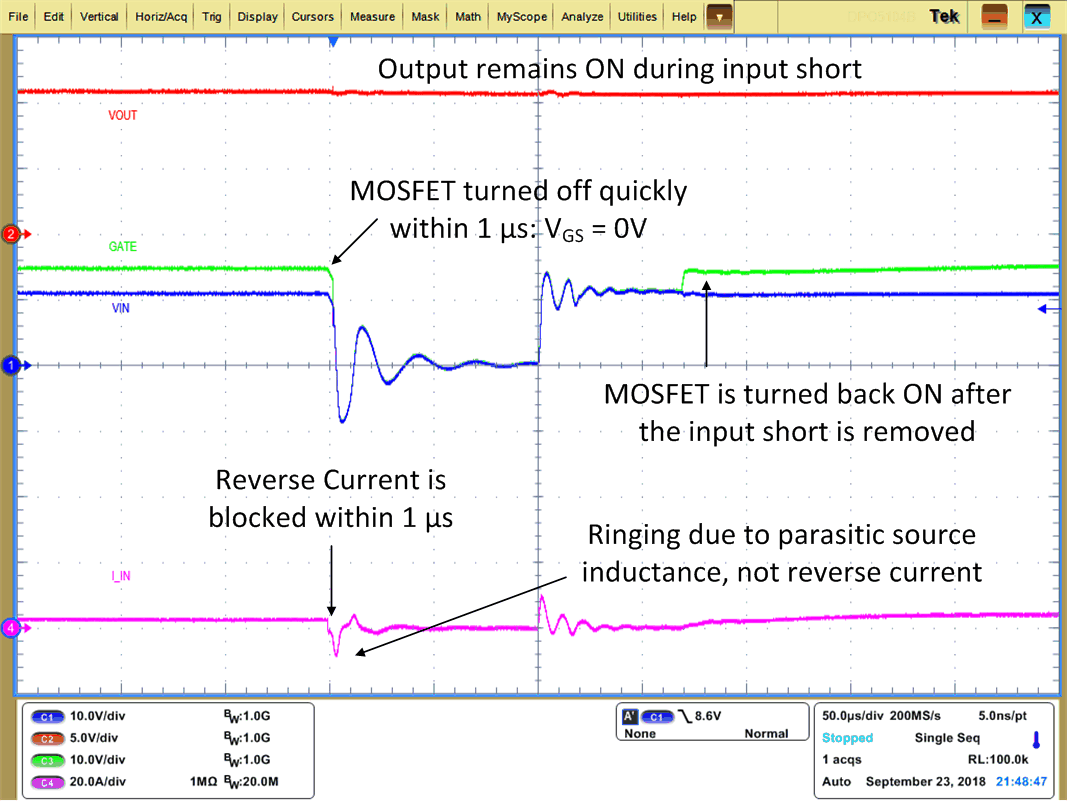SLVAE57B February 2021 – October 2021 LM5050-1 , LM5050-2 , LM5051 , LM66100 , LM74202-Q1 , LM74500-Q1 , LM74610-Q1 , LM74700-Q1 , LM74720-Q1 , LM74721-Q1 , LM74722-Q1 , LM7480-Q1 , LM7481-Q1 , LM76202-Q1 , SM74611 , TPS2410 , TPS2411 , TPS2412 , TPS2413 , TPS2419
- Trademarks
- 1 Introduction
- 2 Reverse Battery Protection
- 3 ORing Power Supplies
- 4 Reverse Battery Protection using MOSFETs
- 5 Reverse Polarity Protection vs Reverse Current Blocking
- 6 What is an Ideal Diode Controller?
- 7 Automotive Transient protection with Ideal Diode Controllers
- 8 ORing Power Supplies with Ideal Diode Controllers
- 9 Integrated Ideal Diode Solution
- 10Summary
- 11References
- 12Revision History
7.4 Input Micro-Short
Many power systems are required to withstand short interruption in supply line or input micro-short and continue to function uninterrupted. In Figure 7-4, when the input micro-short is applied at the input, the LM74700-Q1 reacts quickly to turn off the MOSFET to block reverse current from flowing back into the shorted supply. Output remains ON during the input short as the output hold-up capacitors are isolated from input short and supply load current until the input recovers from micro-short. Note that after the MOSFET is turned off, input current rings due to the parasitic inductance in the supply path and does not contribute to reverse current.
 Figure 7-4 LM74700-Q1 Response to Input Micro-short
Figure 7-4 LM74700-Q1 Response to Input Micro-short